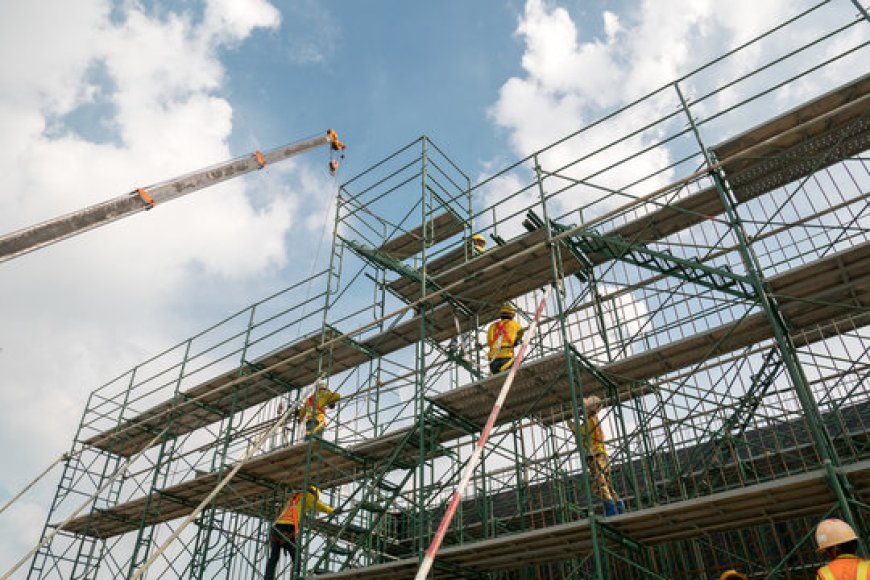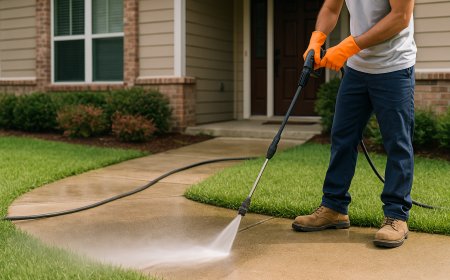What Are the Access Requirements for Scaffolds?
When working at height, scaffolding provides a safe and secure platform for tradespeople—but only if proper access is provided and maintained

When working at height, scaffolding provides a safe and secure platform for tradespeople—but only if proper access is provided and maintained. Whether it's a domestic build or commercial project, Access Scaffolding Services in Warrington is critical for compliance with UK safety regulations and for protecting workers from injury.
Why Is Safe Access to Scaffolding So Important?
Falls from height are one of the leading causes of serious injuries in the UK construction industry. According to the HSE (Health and Safety Executive), improper scaffold access is a major contributor to these accidents.
Proper access means workers can:
-
Reach their working platform safely
-
Move between levels without climbing frames
-
Transport tools and materials securely
-
Exit quickly in the event of an emergency
In short: if access is unsafe, the entire scaffold becomes a risk.
Key Scaffold Access Requirements in the UK
Under The Work at Height Regulations 2005, and TG20:21 guidelines, scaffolding must include safe and compliant access routes at all times. Here’s what that involves:
1. Safe Ladder Access
Ladders must be:
-
Fixed at a safe angle (75° or 4:1 ratio)
-
Secured top and bottom to prevent movement
-
Extend at least 1 metre above the platform
-
In good condition, free from damage
Ladders must never be used if they are simply resting against scaffold bars without proper fixings.
2. Stair Towers or Internal Staircases
On larger or more complex scaffolds—especially in commercial or multi-storey applications—stair towers are required. These offer a safer and more efficient way for workers to travel between levels, particularly when carrying tools or materials.
Benefits of stair towers include:
-
Better load handling
-
Improved traffic flow
-
Lower fall risk compared to ladders
3. Clear Walkways and Platforms
All scaffold platforms must:
-
Be at least 600mm wide for one worker, and 1,050mm for two-way traffic
-
Be free from trip hazards and loose materials
-
Have secure, evenly spaced boards
-
Include toe boards and guardrails to prevent falls
Note: Obstructed or cluttered walkways are a violation of safety codes and increase risk.
4. Access Gates and Edge Protection
Wherever ladders or stair access meets a working platform, spring-loaded scaffold access gates should be installed. These prevent accidental falls and ensure secure transitions between levels.
Guardrails should be:
-
Installed at 950mm height or more
-
Accompanied by intermediate rails and toe boards
5. Weather-Proofing and Anti-Slip Measures
In wet or icy conditions, access points must include:
-
Anti-slip boarding
-
Weather protection sheeting if necessary
-
Regular inspection to remove hazards like ice or debris
6. Clear Signage and Lighting
Scaffold access points must be clearly marked, especially on larger sites. Adequate lighting is essential for early starts, late finishes, or indoor areas with limited visibility.
Tip: Poor visibility at access points is a frequent cause of avoidable falls—ensure good lighting at all times.
7. Regular Inspection and Maintenance
Access routes must be inspected:
-
After installation
-
Every 7 days thereafter
-
After adverse weather or alterations
Inspections should be documented and carried out by a competent person with scaffolding safety training.
What Happens if Access Requirements Aren’t Met?
Failing to meet scaffold access standards can result in:
-
Accidents and serious injury
-
Legal action or HSE penalties
-
Project delays and insurance claims
-
Damage to business reputation
That’s why hiring professional, certified scaffolders is essential.
Trust Safe Access with Scaffolder Warrington
At Scaffolder Warrington, we design, erect, and maintain scaffolding systems that meet and exceed UK access safety regulations. Whether you're working on a residential home or a commercial property, we ensure all platforms, ladders, stair towers, and gates are securely installed and inspected regularly.
Our team is fully trained in TG20:21 standards, and we never compromise on safety or compliance.
Final Thoughts
Access requirements for scaffolds are not just a checklist—they're a legal and practical necessity. Safe access ensures your project runs smoothly, protects your workforce, and meets regulatory standards. Need professional scaffolding with safe access built-in? Contact Scaffolder Warrington today for a free site survey, expert advice, and fully compliant scaffold installation.










































